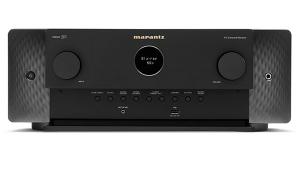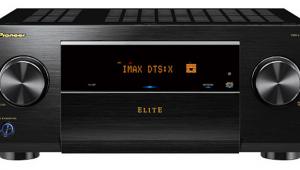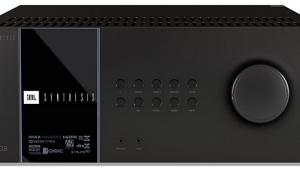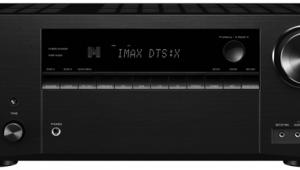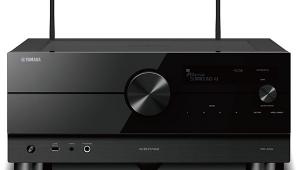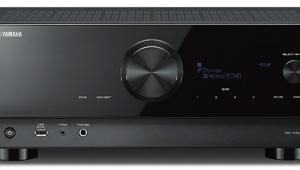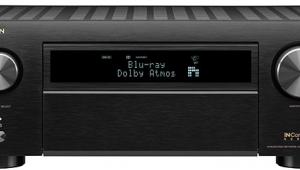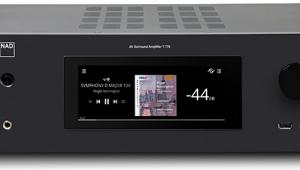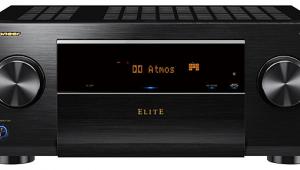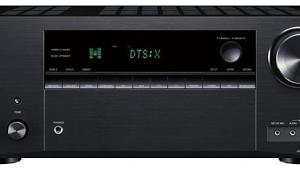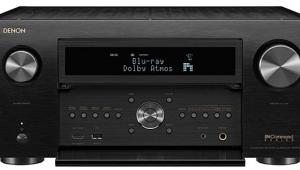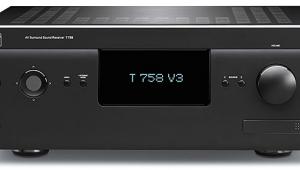Yamaha RX-V6A 7.2-channel A/V Receiver Review Page 2
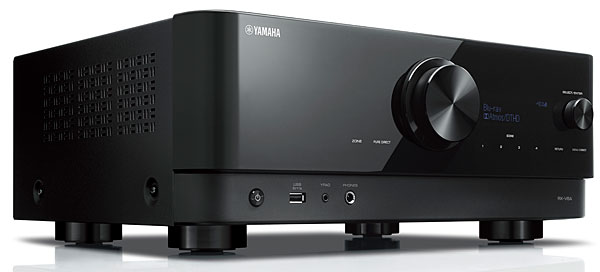
Setup
For most of my listening I used a PSB Synchrony One 7.1.2 surround speaker package with ceiling-mounted PSB Alpha P3 speakers for Atmos/DTS:X overhead effects and a SVS SB-2000 Pro subwoofer. With 7 x 100 watts, I figured the RX-V6A's class-A/B amps had plenty of power to drive the PSBs. The receiver has the latest version of Yamaha's YPAO automated setup program, which can measure the room at up to eight positions to determine equalization, speaker crossover and distance, and room reflection control. As I normally do, I ran the program and then manually tweaked the results, setting the EQ so the front left and right speakers were not equalized, but the other speakers were adjusted to match them.
Despite the RX-V6A having an all-new platform, I found its onscreen menus to be decidedly old-school looking: mostly just tiny text that covered the left third of the screen area plus a few graphics. The smallish front-panel LCD display wasn't much help either, with dim washed-out text even at its brightest setting. The text does automatically expand to fill the display when you change a setting but reverts back to the tiny format after a couple of seconds. Thankfully, the RX-V6A also supports Yamaha's AV Setup app, where you can enter your basic configuration in a more graphically user-friendly way on a portable device, and then transfer those settings to the receiver. (Cool, but why couldn't they simply build this functionality into the receiver's own setup menus?) I say bring back the cool orange VFD displays of past Yamahas. They were so much easier to read!
 Music Performance
Music Performance
I started off with two-channel music played in Pure Direct mode to get a handle on the amp's ability to drive the Synchrony Ones. Rickie Lee Jones' song "Dat Dere" features some great jazz musicians, with Charlie Haden on bass and a beautiful tenor sax solo from Joe Henderson. Heard through the RX-V6A, Henderson's sax was buttery and smooth, and Haden's bass powerful and tuneful. The pluck of his fingers on the strings added a sense of realism, letting me sense the weight and body of the instrument. The palpable tone of guitarist Robben Ford's nylon strung acoustic rounded out the outstanding transparency of the sound I was hearing.
For something with a little more get up and go, I played "The Race" by the Swiss group Yello. This track features some really super-deep, pulsing bass that can sound messy when not well-controlled, but the Yamaha kept things under a tight rein, delivering a punchy, gut-slam feeling. This track also has some spectacular stereo effects, with synthesized car sounds zooming between and around the speakers. The Yamaha did a fine job of creating a huge image with a soundfield that extended well beyond and behind the speakers.
Surround music mixes can be very hit or miss, but one of my favorites is the 30th anniversary SACD of Pink Floyd's Dark Side of the Moon. James Guthrie took full advantage of the extra channels to create a mix that enhances the original stereo version without sounding gimmicky. From the low heartbeat thump at the opening, to Clare Torry's ethereal singing on "The Great Gig in the Sky," this SACD sounded superb played on my Oppo player through the RX-V6A. The clang of the cash registers on "Money" and the clocks on "Time" surrounded me while the band itself sounded focused across the front stage.
Movies Performance
Switching to action movies to give the RX-V6A a more serious workout, I cued up the helicopter chase from Mission Impossible: Fallout. The loud helicopter engine sounds, combined with occasional heavy bore gunfire and a sweeping orchestral score, in this scene would be enough to bring a wimpy receiver to its knees. But the Yamaha didn't break a sweat, and with all seven channels pumping the sound remained clean and dynamic even when my SPL meter was hitting peaks of around 105dB. Of course, the deep bass here was mostly handled by the system's powered subwoofer, but the Yamaha's ability to deliver unstressed midrange punch, along with plenty of mid-bass warmth, made it easy to crank the volume up without making it feel like my ears were being assaulted.
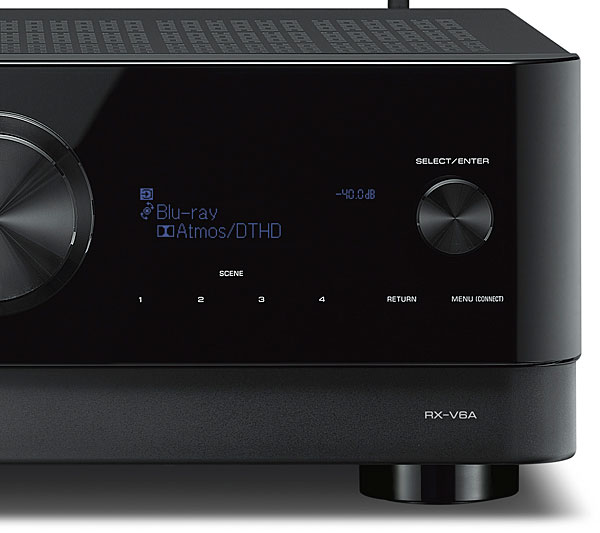
For a more subtle sound mix, I checked out season 1, episode 2 of the Amazon series Jack Ryan, which opens with a quiet interaction between two priests in a Paris church. Small details in the Atmos soundtrack really set the scene, letting me hear the spatial qualities of the church itself, the tolling of a bell, and after, the sound outside as one of the priests walks along a cobblestone street. The experience delivered by the Yamaha drove home what Atmos and DTS:X immersive surround mixes do so well: put the viewer into the same acoustic space as what's being shown onscreen. The RX-V6A may be limited to just two amp-channels for overhead speakers, but I found that to be more than enough to create an enveloping effect, one enhanced by its ability to deliver subtle details in soundtracks.
Conclusion
No other category of home theater component evolves as quickly as the A/V receiver, and with new formats and enhancements arriving regularly, it's tough to stay up to date. Based on an entirely new platform, Yamaha's RX-V6A delivers much of the latest technology at an affordable price, and also holds the promise for updates to the latest HDMI 2.1 features. Toss in its fine performance and versatility, and Yamaha's latest mid-price receiver adds up to an excellent foundation on which to build a great multichannel system.
